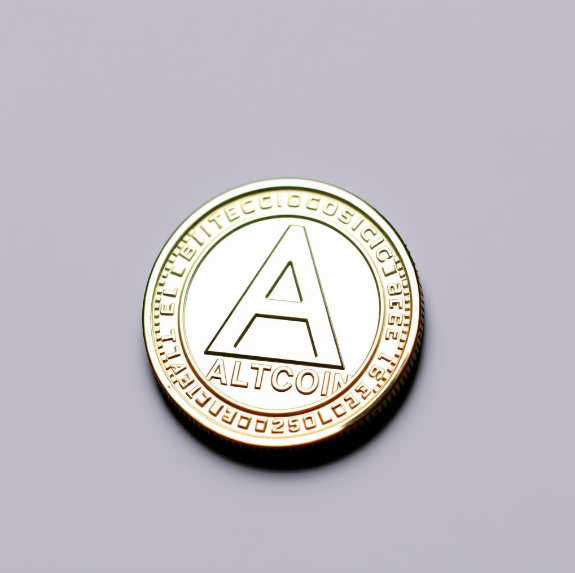What Are Crypto Cards?
Bitcoin credit cards represent an innovative financial tool that provides crypto holders with a way to earn rewards or make purchases without selling their Bitcoin directly. Unlike debit cards, Bitcoin credit cards work just like traditional credit cards-funding your spending through a credit line rather than accessing crypto from your wallet at the point of sale.
Benefits of using crypto cards:
- Instant conversion of crypto to fiat currency, allowing for real-world purchases.
- No need to manually sell crypto before spending-your card handles it on the go.
- Access to your crypto funds anywhere in the world, with just a swipe.
With the increasing acceptance of cryptocurrencies, crypto cards have become an essential tool for crypto enthusiasts who want to integrate digital assets into their daily lives.
How to Choose the Right Crypto Card for You?
Not all crypto cards are created equal, so it's important to know what features matter the most when choosing the best one for you. Here are a few key aspects to consider:
Transaction Fees
Crypto cards often come with varying transaction fees. Some cards charge per transaction, while others offer no-fee spending up to a certain limit. Look for a card with low or no transaction fees to get the most out of your crypto.
Supported Cryptocurrencies
The best crypto cards support a wide range of digital assets. Whether you hold Bitcoin, Ethereum, or lesser-known altcoins, ensure your card supports the coins you use frequently.
Conversion Rates
Real-time crypto-to-fiat conversion is crucial. Choose a card that offers competitive exchange rates, ensuring you get the best value when spending your crypto.
Security Features
Security should always be a priority. The best crypto cards offer robust security features like two-factor authentication (2FA), encryption, and the ability to freeze your card instantly in case of loss or theft.
How Crypto Cards Help You Earn Rewards
One of the major attractions of crypto cards is the potential to earn rewards. While traditional debit cards often offer cash-back rewards, crypto cards take it to the next level by giving you the option to earn crypto rewards.
Cashback programs
Many crypto cards offer cashback on every purchase you make. Instead of receiving fiat currency, you'll receive a percentage of your spending in crypto.
Crypto rewards vs fiat rewards
Crypto rewards allow you to earn digital assets that could appreciate in value over time, making them potentially more lucrative than traditional cashback offers. Depending on your card, you may earn rewards in popular cryptocurrencies like Bitcoin or in the card issuer's native token.
Loyalty programs
Some crypto cards come with loyalty programs, offering additional perks such as higher cashback rates, exclusive events, or bonuses for holding certain amounts of crypto in your account.
Using Crypto Cards Globally
One of the greatest benefits of using a crypto card is the ability to spend your digital assets globally. Whether you're traveling abroad or making online purchases from international merchants, crypto cards offer unparalleled flexibility.
Multi-currency support
Many crypto cards allow you to hold and convert multiple currencies-both fiat and crypto-making international travel a breeze. You can avoid costly currency conversion fees and use your card anywhere.
Important considerations for international spending
Some cards may charge additional fees for foreign transactions, so it’s important to read the fine print. Also, ensure your card offers good customer support and fraud protection when used abroad.
Pros and Cons of Using Crypto Cards
Before jumping into the world of crypto cards, it’s important to weigh the pros and cons.
Pros:
- Convenience: Easily spend your crypto in everyday situations without manually converting it to fiat.
- Rewards: Many crypto cards offer lucrative rewards programs, giving you back a percentage of your spending in digital assets.
- Access: Crypto cards allow you to access your crypto funds globally, with fewer restrictions than traditional banking systems.
Cons:
- Fees: Depending on the card, fees can add up, especially for international transactions or crypto-to-fiat conversions.
- Security concerns: While crypto cards are generally secure, they come with the same risks as any debit or credit card, including fraud and hacking.
- Tax implications: Spending crypto is considered a taxable event in many jurisdictions, which means you might have to report your transactions for capital gains tax.
The Future of Crypto Cards
The world of crypto cards is constantly evolving, and 2025 is set to bring even more innovations with V Card luring new users with more features than ever. As cryptocurrency becomes more mainstream, we can expect to see:
Improved regulations
Governments around the world are working to create clearer regulatory frameworks for crypto assets. This will lead to greater consumer confidence and potentially more widespread adoption of crypto cards.
Enhanced security measures
With advances in blockchain technology, future crypto cards may feature even stronger security protocols, giving users peace of mind when spending their digital assets.
Expanded use cases
As crypto adoption grows, we may see crypto cards being used not only for retail purchases but also for more complex financial transactions, such as loans or investment opportunities.
FAQ: Best Crypto Cards in 2025
Do I need to convert my crypto to fiat before using a crypto card?
No, the card does it for you in real-time. When you make a purchase, the card automatically converts the required amount of crypto from your wallet into fiat currency.
Are there any fees associated with using a crypto card?
Yes, fees vary depending on the card provider. These may include transaction fees, withdrawal fees, and foreign transaction fees. Some cards offer no-fee options up to a certain spending limit.
Can I use my crypto card abroad?
Yes, many crypto cards support international transactions and multi-currency conversion. However, it's essential to check if the card has foreign transaction fees or additional charges for international use.
Are crypto card transactions secure?
Most crypto cards offer robust security features like two-factor authentication (2FA), encryption, and the ability to lock or freeze your card instantly if lost. Still, it's important to be aware of potential risks, like fraud, just as with any other card.
Can I earn rewards with a crypto card?
Yes, many crypto cards offer reward programs where you can earn crypto rewards or cashback on purchases. Rewards are usually in the form of digital assets that may appreciate over time.
Are there tax implications for spending crypto with a card?
Yes, in many jurisdictions, spending cryptocurrency is considered a taxable event. You may need to report capital gains or losses for each transaction, depending on local tax laws.
How do I choose the best crypto card for me?
Consider your spending habits, the cryptocurrencies you hold, and the fees associated with the card. Look for cards that offer features tailored to your needs, such as low fees, supported coins, and rewards programs.
Can I hold multiple cryptocurrencies on a crypto card?
Yes, many crypto cards support multiple cryptocurrencies. You can hold and convert various coins depending on your preferences and the card provider’s offerings.
What happens if I lose my crypto card?
Most crypto card providers offer the ability to freeze or lock your card instantly through their mobile app or customer service. This prevents unauthorized transactions until you can replace the card.









































